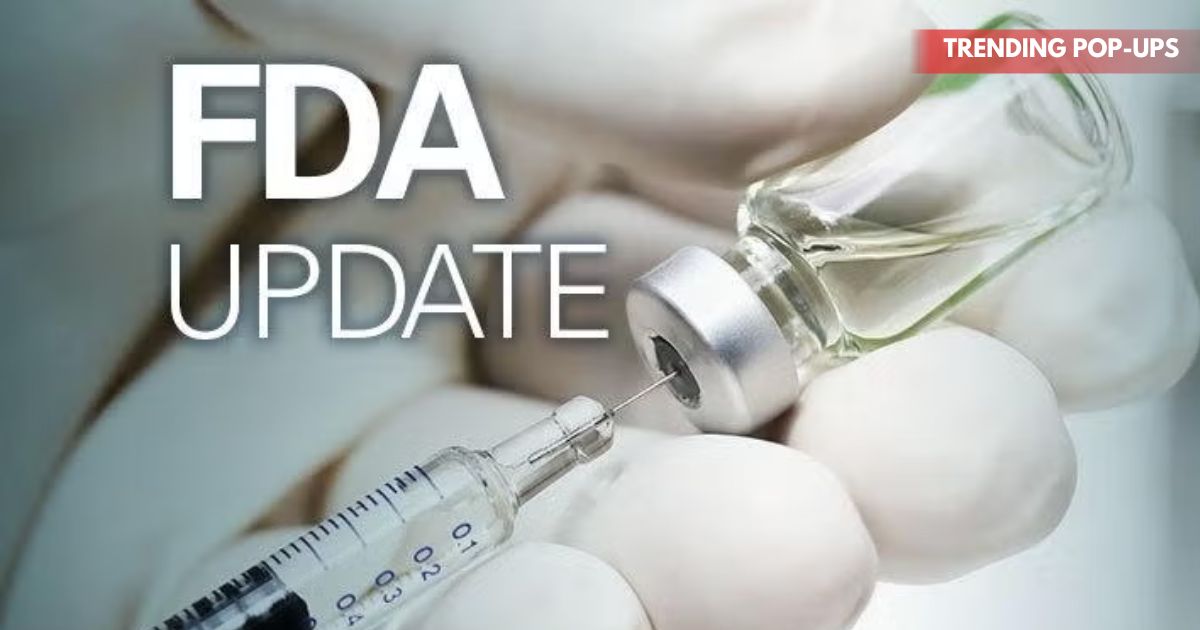On August 27, 2025, the U.S. Food and Drug Administration (FDA) approved updated COVID-19 vaccines from Pfizer, Moderna, and Novavax, specifically targeting individuals at higher risk for severe disease. This marks a significant shift from previous recommendations for universal vaccination, reflecting a more targeted public health approach.
This article explores the details of the FDA’s decision, eligibility criteria, public health implications, and what this means for Americans moving forward.
Understanding the FDA’s Latest COVID-19 Vaccine Approval
The FDA’s recent approval authorizes COVID-19 vaccines for a narrower population, focusing on those most vulnerable to severe outcomes. This includes older adults, individuals with underlying health conditions, and immunocompromised patients.
The vaccines included in this update are:
-
Pfizer’s Comirnaty – mRNA vaccine
-
Moderna’s Spikevax – mRNA vaccine
-
Novavax – protein-based vaccine
Importantly, Pfizer’s vaccine is no longer authorized for children under five, leaving Moderna as the primary option for high-risk young children.
Eligibility Criteria for the Updated Vaccines
The updated approval defines “high-risk” individuals as:
-
Adults aged 65 and older
-
Individuals aged 5–64 with chronic conditions such as:
-
Diabetes
-
Heart disease
-
Obesity
-
Asthma or other respiratory conditions
-
Immunocompromised states due to illness or treatment
-
Individuals outside these criteria are not currently recommended for the updated vaccines, signaling a policy shift from universal coverage to targeted protection.
Why the Policy Shift Matters
This change reflects a strategic move to focus on high-risk populations rather than maintaining universal vaccination campaigns. Several factors influenced this decision:
-
Lower risk for severe disease among healthy adults and children
-
Resource allocation toward those most vulnerable
-
Minimizing potential side effects in lower-risk populations
-
Public health cost-effectiveness
While this approach may reduce unnecessary vaccination for low-risk groups, experts caution that it could create confusion regarding eligibility, insurance coverage, and access.
Public Health Implications
The FDA’s targeted approval has several implications:
1. Healthcare Guidance
Healthcare providers must carefully identify patients eligible for vaccination. Accurate documentation of underlying conditions will be essential to verify eligibility.
2. Insurance Coverage
Vaccine access may depend on insurance coverage, particularly for individuals who do not meet the high-risk criteria. This could result in out-of-pocket expenses for some Americans.
3. Vaccine Accessibility
High-demand areas could face supply challenges, emphasizing the need for strategic distribution channels in clinics, hospitals, and pharmacies.
4. Impact on Children
With Pfizer no longer authorized for children under five, parents of high-risk children must consult healthcare providers to determine safe options using Moderna’s vaccine.
The Role of the CDC
Following the FDA’s approval, the Centers for Disease Control and Prevention (CDC), through its Advisory Committee on Immunization Practices (ACIP), is expected to provide updated recommendations. These guidelines will influence:
-
Eligibility verification
-
Vaccine schedules
-
Insurance coverage and reimbursement
-
Public health messaging
The ACIP, under the current administration, is likely to support a targeted vaccination approach, emphasizing high-risk groups while avoiding blanket recommendations.
What This Means for High-Risk Individuals
For those eligible, the updated vaccines offer:
-
Protection against severe COVID-19 outcomes
-
Reduced risk of hospitalization and complications
-
Enhanced immune response to circulating variants
High-risk individuals are encouraged to consult their healthcare providers regarding the timing, type, and dosage of the updated vaccines.
Tips for Navigating the Updated Guidelines
-
Check Eligibility: Review age, health conditions, and risk factors to confirm eligibility.
-
Consult Healthcare Providers: Discuss any chronic conditions, previous COVID-19 vaccinations, and current medications.
-
Schedule Appointments Early: Due to limited eligibility, clinics may prioritize appointments for high-risk populations.
-
Stay Informed: Follow official CDC and FDA updates to avoid misinformation.
-
Document Medical History: Maintain records of chronic conditions or immunocompromised status to ensure smooth vaccine access.
Addressing Public Concerns
Some Americans may feel confused or concerned about the change in vaccine guidance. Key points to understand:
-
The vaccine is not unsafe for low-risk groups; it’s simply prioritized for those most vulnerable.
-
Vaccine distribution will focus on high-risk individuals, ensuring efficient use of resources.
-
Ongoing surveillance will monitor vaccine effectiveness and adverse events, maintaining public safety.
Clear communication from healthcare providers and government agencies is essential to prevent misconceptions and ensure smooth implementation.
Conclusion
The FDA’s approval of COVID-19 vaccines for high-risk individuals marks a new phase in pandemic management. By focusing on vulnerable populations, public health authorities aim to maximize protection while minimizing unnecessary interventions for low-risk groups.
For eligible individuals, staying informed, consulting healthcare providers, and following CDC guidance will ensure optimal protection against severe COVID-19. As the situation evolves, clear communication and careful planning will be key to navigating this targeted vaccination strategy.
Also Read : Daily Habits to Reduce Anxiety and Stress
FAQs
1. Who is eligible for the updated COVID vaccines?
Adults aged 65 and older and individuals aged 5–64 with underlying conditions like diabetes, heart disease, obesity, asthma, or immunocompromised states.
2. Are children under 5 eligible?
No. Pfizer is no longer authorized for this age group. Moderna may be used for high-risk children under 5.
3. Will everyone need annual COVID shots?
Current guidance focuses on high-risk populations. Healthy individuals may not require routine annual vaccination.
4. How will insurance coverage work?
Coverage may vary. High-risk individuals are generally covered, but others may face out-of-pocket costs.
5. Where can I get the updated vaccines?
Vaccines are available at hospitals, clinics, and pharmacies. Eligible individuals should schedule appointments in advance.
6. Are these vaccines safe?
Yes. The vaccines have undergone rigorous FDA evaluation to ensure safety and efficacy for high-risk populations.
7. Why is the FDA limiting access now?
This targeted approach prioritizes those most likely to experience severe COVID-19, focusing public health resources efficiently.
